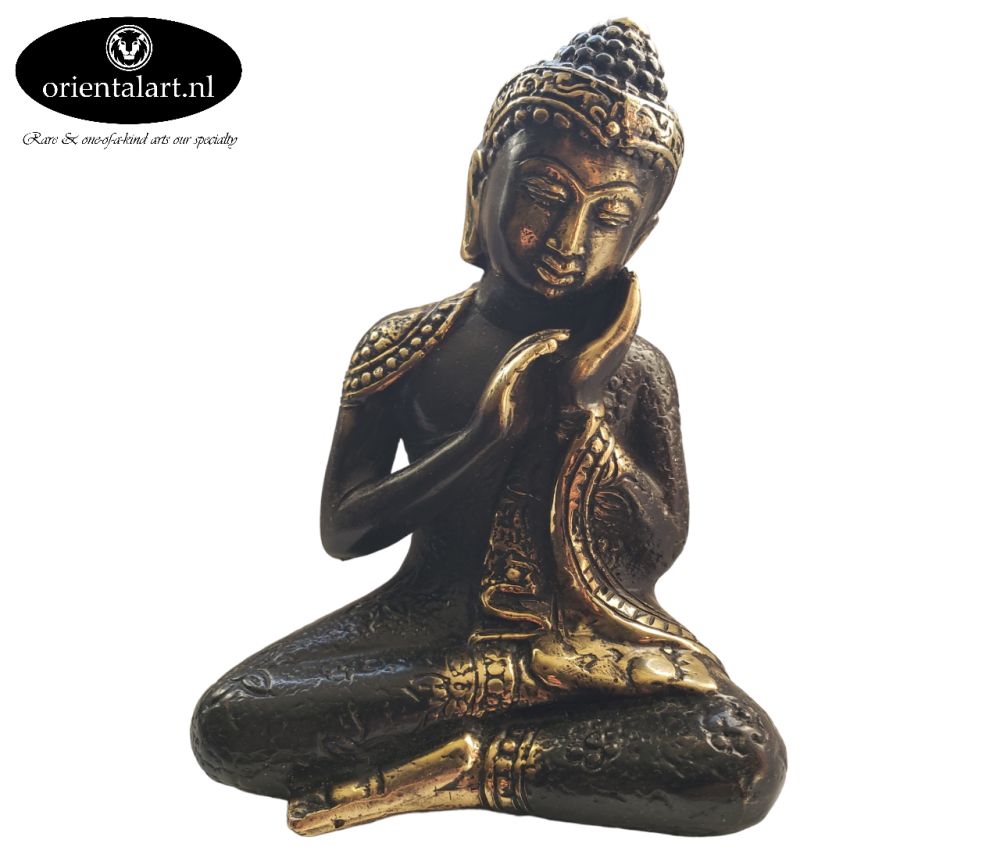We use cookies to make your experience better.
TimmersGems has a new website, existing customers also need to register again.
Bronze Buddha 110x85mm made in Indonesia. (delivered in brown/green or gold-colored bronze depending on availability)
Bronze, like stones, is a natural and honest material, which we purchase from various small family businesses in Java and Lombok. Beautifully detailed statues that can be combined very well with stones. (delivered in brown/green or gold-colored bronze depending on availability). Place this behind the statue.
Availability:
In stock
SKU
120503
There are several methods and methods possible for casting bronze. The following attempts to summarize the basic steps. A model is made, usually of wax. but if it is made into a rubber mold, it can also be made from clay, plaster, plastic or even wood or stone. The wax used for this is usually casting wax, paraffin or modeling wax. For small wax models, the caster can immediately proceed to the next step. For larger models or models made of clay or plaster, for example, a hollow wax model must first be made. To this end, the caster usually makes a rubber mold with a plaster support cap, which ensures that the rubber mold retains its shape. Various materials can be poured into this rubber mold at a relatively low temperature, such as casting wax or plaster. In this case, a hard wax casting is needed, which is already at the thickness of the final bronze. Above a certain thickness it becomes difficult to cast bronze solidly, due to uneven shrinkage of thicker and thinner parts. The caster pours liquid wax into the rubber mold until a layer of wax has solidified in the mold to the correct thickness. The rest is poured off, creating a hollow wax cast. This (hollow) casting is provided with wax projections that will later serve as sprues for the supply of the bronze and ventilation channels for the removal of air in the cast. The wax casting, including channels, is covered from the inside and outside with a refractory mass. This can be a mixture of plaster and chamotte or another shrink-resistant and refractory material. Stainless steel core supports ensure that the distance between core and outside remains the same. The completed mold is heated for a long time in an oven to melt out the wax and remove all moisture from the mold and, if it is plaster, all chemically bound water. A dry cast has now been created with a cavity in the shape of the model with sprues. Liquid bronze is poured into this. After cooling, the channels are sawn away and the casting is finished: burrs and protrusions are ground away and holes and unwanted cavities are hammered or welded closed. To protect against oxidation and for embellishment, a patina layer is often applied to bronze castings, especially sculptures, with chemicals, the so-called patination.
| Dimensions | 110x85mm |
|---|---|
| Country of Manufacture | Indonesia |












